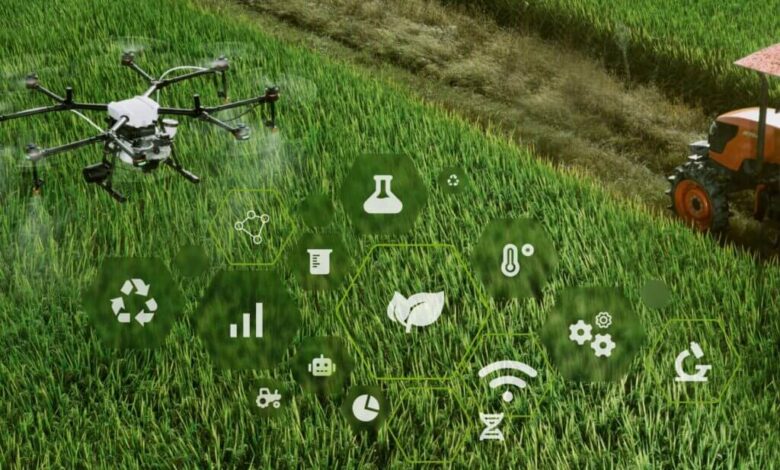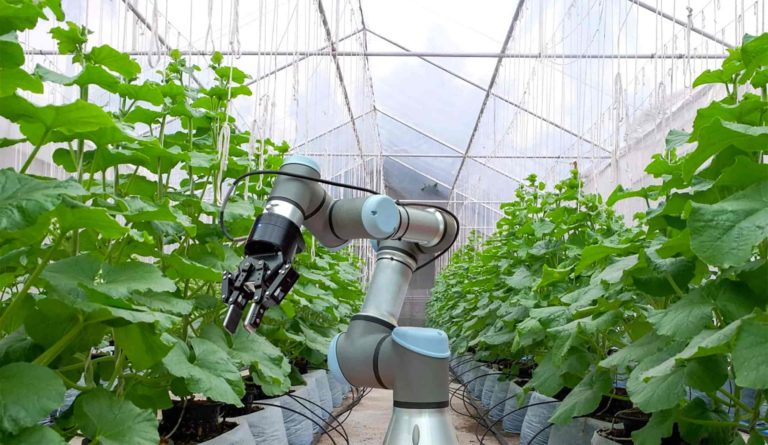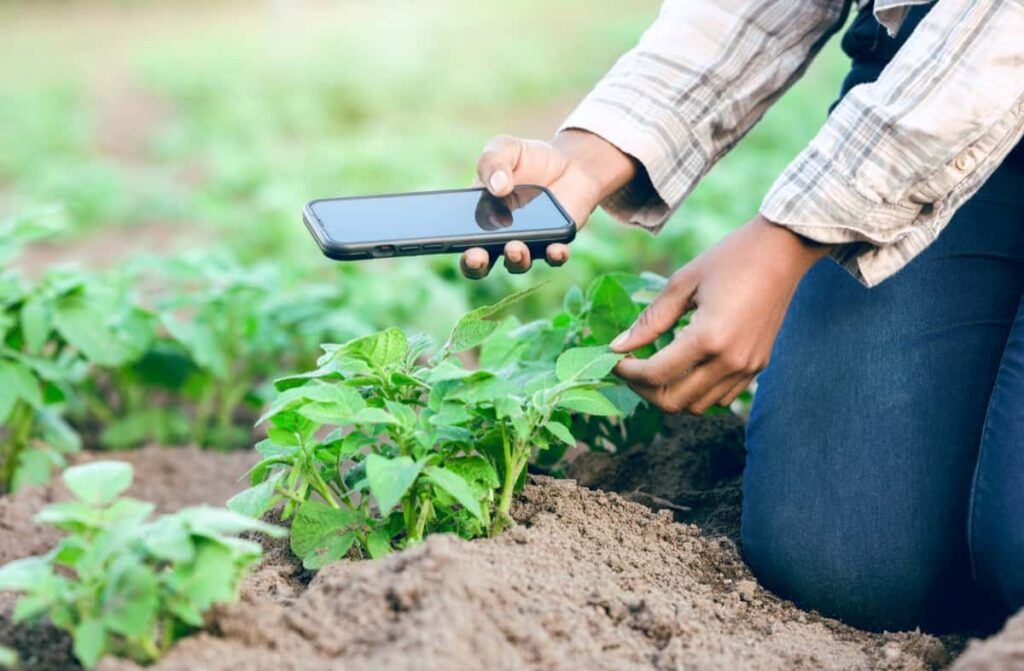Agritech’s Modern Solutions Ensure Secure Food Systems

The global food system is at a critical juncture. Faced with the monumental challenges of a growing population, climate change, and dwindling natural resources, the agricultural sector must innovate to meet future demands. Enter agritech, a dynamic field that is revolutionizing farming through the strategic application of technology. What was once a slow, analog industry is being transformed by a wave of modern solutions, from precision farming and automation to data-driven decision-making and sustainable practices. This isn’t just about bigger tractors; it’s about creating a more intelligent, efficient, and resilient food system. This article will take a deep dive into the most significant advancements in agritech, their profound impact on farmers and consumers, the challenges that still need to be addressed, and the immense opportunities that lie ahead for feeding a planet of nearly 10 billion people.
The Data-Driven Agriculture

The cornerstone of modern agritech is the ability to collect, analyze, and act on vast amounts of data. This shift from intuition-based farming to a data-driven approach is a game-changer for productivity and sustainability.
A. The Internet of Things (IoT) in Farming
IoT is the foundational layer of smart agriculture. It involves a network of sensors and connected devices that collect real-time data from the field.
- Soil Sensors: These sensors can monitor soil moisture, temperature, and nutrient levels, providing farmers with precise information on when and where to irrigate and fertilize. This not only conserves water and resources but also reduces the environmental impact of fertilizer runoff.
- Weather Stations: On-farm weather stations provide hyper-local weather data, helping farmers make critical decisions about planting, harvesting, and applying treatments.
- Drones and Satellites: Drones and satellites equipped with multispectral cameras can fly over large fields, providing high-resolution images that reveal crop health, stress, and pest infestations. This allows for a proactive rather than a reactive approach to crop management.
B. The Power of AI and Machine Learning
The raw data collected by IoT devices would be useless without the ability to analyze it. Artificial intelligence (AI) and machine learning (ML) are the brains of the operation, turning data into actionable insights.
- Predictive Analytics: AI can analyze historical data from weather patterns, soil conditions, and crop yields to predict future outcomes. This helps farmers choose the best crops for their land, optimize planting schedules, and forecast yields with greater accuracy.
- Automated Pest and Disease Detection: AI algorithms can analyze images from drones to automatically detect early signs of a pest infestation or a crop disease, allowing for immediate and targeted intervention. This reduces the need for broad-spectrum pesticides, saving money and protecting the environment.
- Precision Irrigation: AI can analyze data from soil sensors and weather forecasts to create a precise irrigation schedule, delivering the exact amount of water needed to each part of a field. This can save billions of gallons of water per year on a global scale.
Automation and Robotics
The labor-intensive nature of farming is changing rapidly with the introduction of robotics and automation. These machines are not just replacing human labor; they are performing tasks with a level of precision and efficiency that is impossible for humans to match.
A. Autonomous Tractors and Harvesters
Autonomous tractors and harvesters, guided by GPS and sensors, can navigate fields with centimeter-level accuracy.
- Optimized Planting: They can plant seeds at the optimal depth and spacing, ensuring a higher germination rate and a more uniform crop.
- 24/7 Operation: These machines can operate around the clock, working through the night to take advantage of ideal weather conditions, a critical advantage during planting and harvesting seasons.
- Reduced Fuel Consumption: Autonomous machines can be programmed to follow the most efficient path through a field, reducing fuel consumption and minimizing soil compaction.
B. Robotic Weeders and Harvesters
The most repetitive and physically demanding tasks in farming are being automated by robots.
- Robotic Weeders: Robots equipped with computer vision can identify weeds and remove them with mechanical tools or a targeted dose of herbicide, eliminating the need for blanket spraying of chemicals.
- Automated Harvesters: Robots are being developed to harvest delicate crops like strawberries and tomatoes, using a soft touch and a level of precision that reduces bruising and waste. This is particularly important for high-value crops where a small amount of damage can significantly reduce the value of a harvest.
Sustainability in Practice
Agritech is not just about increasing yields; it’s about creating a more sustainable food system that can withstand the pressures of a changing climate.
A. Vertical Farming and Controlled Environment Agriculture (CEA)
As arable land becomes more scarce and weather patterns more unpredictable, vertical farming offers a powerful solution.
- Resource Efficiency: Vertical farms use a fraction of the water and land required for traditional farming. By growing crops indoors in a stacked, controlled environment, they can recycle water, optimize light, and grow food year-round, regardless of external weather conditions.
- Reduced Food Miles: By locating vertical farms in or near urban centers, the food miles—the distance food travels from farm to plate—are dramatically reduced, cutting down on transportation costs and emissions.
- No Pesticides or Herbicides: The controlled environment of vertical farms means that pests and weeds are not an issue, eliminating the need for chemical sprays.
B. Bioengineering and Gene Editing
The ability to precisely edit the genetic code of plants and animals is a game-changer for resilience and nutrition.
- Drought-Resistant Crops: Scientists are using tools like CRISPR to create crops that can withstand prolonged periods of drought, a critical adaptation in a world with more extreme weather.
- Nutrient-Enhanced Foods: Bioengineering can be used to create “biofortified” crops that are more nutrient-dense, helping to combat malnutrition in developing countries.
- Disease Resistance: Plants can be engineered to be resistant to common diseases, reducing the need for chemical treatments and increasing crop yields.
The Road Ahead

While the future of agritech is bright, there are significant challenges that need to be addressed to ensure that this revolution is inclusive and sustainable.
A. Data Access and Affordability
The benefits of data-driven agriculture are dependent on a farmer’s ability to access and afford the necessary technology.
- Cost of Technology: The initial investment in sensors, drones, and automated machinery can be prohibitive for small-scale farmers, potentially widening the gap between large commercial farms and smaller family farms.
- Digital Divide: Many rural areas lack the high-speed internet connectivity required to fully utilize IoT devices and cloud-based analytics, a hurdle that needs to be overcome through public and private investment.
- Data Ownership: There is an ongoing debate about who owns the data collected by a farmer’s equipment. Ensuring that farmers maintain control over their data is crucial to prevent large corporations from gaining undue power.
B. Regulatory and Ethical Hurdles
The rapid pace of innovation in agritech is outpacing the ability of regulators to keep up.
- Safety of Autonomous Machinery: Clear regulations are needed for the safe operation of autonomous tractors and other large machinery in fields and on public roads.
- Public Perception of Bioengineering: Despite the scientific consensus on the safety of many bioengineered crops, public trust remains a significant hurdle. There is a need for greater transparency and education to win over consumers.
C. The Human Factor
As farming becomes more automated, the role of the farmer will change from a manual laborer to a technology manager and data analyst. This requires a new focus on education and training to ensure that the workforce has the skills needed for the farms of the future.
Conclusion
Agritech is no longer a futuristic concept; it is a present-day reality that is fundamentally reshaping the global food system. The convergence of technology and agriculture is creating a more intelligent, efficient, and resilient way to feed a growing population. The data-driven approach, powered by the Internet of Things and artificial intelligence, is empowering farmers with unprecedented insights, allowing them to optimize resource use, reduce waste, and increase yields with precision. The introduction of automation and robotics is not just about replacing human labor; it is about performing tasks with a level of accuracy and efficiency that is impossible for humans, from robotic weeding to autonomous harvesting. This is a crucial step towards making farming more productive and less labor-intensive.
Furthermore, these technological advancements are at the heart of the push for a more sustainable food system. Vertical farming offers a powerful solution to resource scarcity and climate unpredictability, while bioengineering provides the tools to create crops that are more resilient to drought and disease. However, as we embrace this new era, we must also confront the significant challenges that lie ahead. The high cost of technology and the lack of digital infrastructure in many rural areas could create a new “agritech divide,” a problem that requires collaborative solutions from governments, technology companies, and the agricultural community. Regulatory and ethical hurdles surrounding autonomous machinery and bioengineered crops must also be addressed with clear, transparent, and science-based policies. The future of agritech is not just about what we grow; it is about how we grow it, with a focus on efficiency, sustainability, and equity. This revolution promises a future where we can meet the immense challenge of feeding a planet, ensuring a healthier and more secure food system for generations to come.
